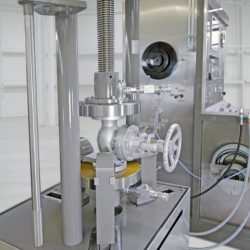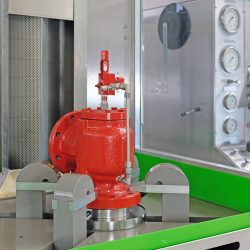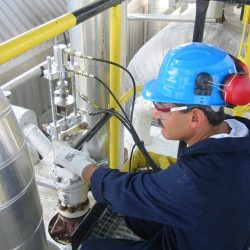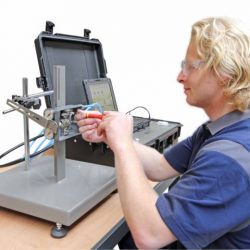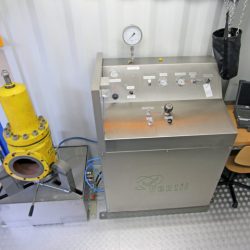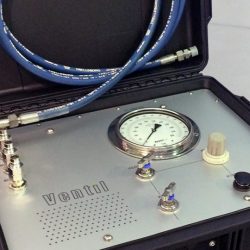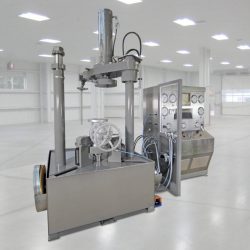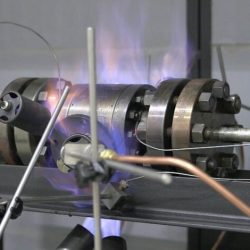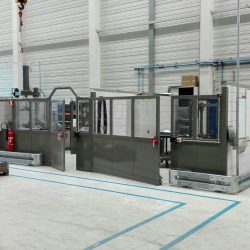Valve test benches for testing manual valves according to international valve test standards as API 6A, API 6D, API 598, ISO 5208 etc. All Ventil Shut Off Valve test stands have pneumatic and hydro test circuits for performing closure and shell tests at high and low pressure levels. Ventil Test Benches are designed to test butterfly valves, ball valves, gate valves, basically all types of shut off valves will fit. The dimensions are based on ANSI B16.34 for flange dimensions and API 6A valve body lengths.
The Ventil test benches are typically equipped with a computer controlled proportional hydraulic clamping system to prevent force overload to the valve body. For obtaining a stress free valve body the test bench can generate clamping force using its actual test pressure using Self Energizing Test Plugs or Ventil’s superior Self Energizing Multi Seal Ring Test Table.
Each test bench comes with a quick filling pump to quick fill the valve with water. The same pump can be used to empty the valve after completing the test. It is essential for safety and test purposes to perform a hydro test without enclosed air in the valve. Horizontal valve clamping stations can be completed with a system to de-air the valve just before starting water fill. Vertical and Tilting valve test clamping stations do not require this as the vertical orientation allows de-airing valve from top side.
The installed test circuits are ready to add a double block and bleed test procedures. The Ventil Valve Test Software CRS is also prepared to test DBB valves.
The Ventil test benches for Shut-off valves are available in three different versions;
VCB Vertical Clamping
- ensures easy liquid filling of the valve body.
- completed with 3-claw clamping for visual inspection of the valve seat.
HC Horizontal Clamping
- easy positioning and clamping of all linear body pattern valves.
- Generally the preferred position for testing actuator controlled valves.
HVC Tilting Clamping System
- combining the positive effects of VCB and HC, easy clamping and testing in any position between 0 – 90°.
- prove the integrity in the same position the valve is supposed to perform in practice.





